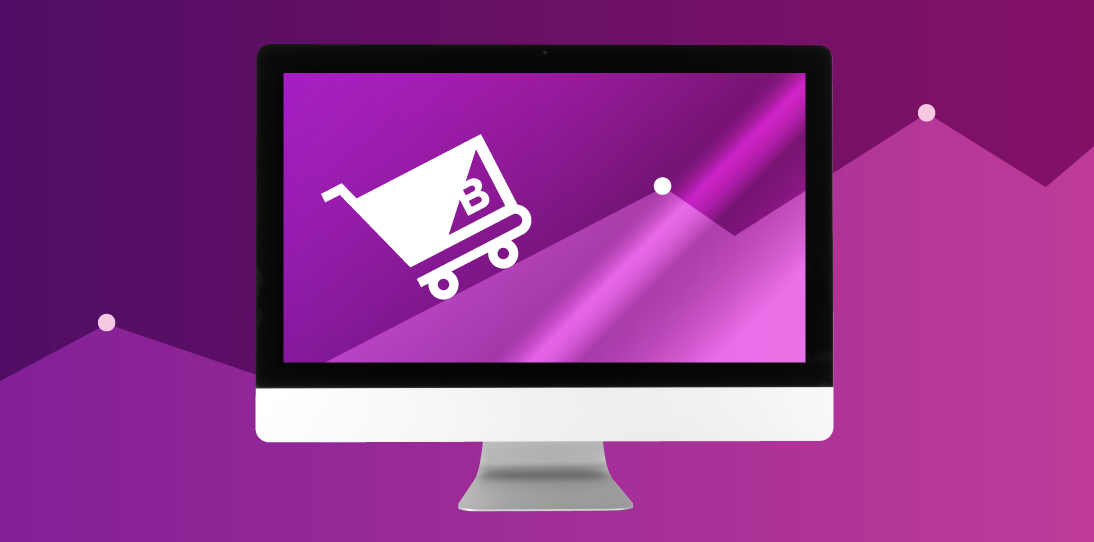- Enterprise
- Essentials
Building a Successful Digital World with Cloud Ecommerce

For most companies, innovation happens in the cloud. The ability to move and scale quickly make it the ideal space for businesses to grow. This applies doubly to ecommerce businesses, which must keep up at an unrelenting pace.
Cloud computing is now commonplace as 90% of organizations report using a public or private cloud-based environment.
For online stores, this may mean parts of a website or the entire platform.
Business (with a capital B) is moving to the cloud because of the significant benefits. Here, we’ll discuss why that is and what makes up a typical ecommerce cloud environment.
Architecture of cloud ecommerce
Almost any part of your IT infrastructure can live in the cloud. From headless commerce to storage to networking, the cloud can be where the components of your commerce business reside.
Front-end components.
This will include the parts that make up the user experience and are customer facing. Parts such as a content management system, payment gateway, and social media integrations are often placed in the cloud. This may also include ecommerce software.
Back-end infrastructure.
The back-end can power the front-end from the cloud. For ecommerce platforms, this will typically include applications, storage, and security. Infrastructure as a Service (IaaS) is becoming an increasingly popular solution for those looking for an end-to-end option.
Database management.
Cloud databases will usually function just as on-premise versions do. Placing databases in the cloud allows users to host them in the cloud and avoid purchasing costly hardware.
Transitioning to a cloud ecommerce solution
Moving to a cloud service is not to be taken lightly. Migrations are complex projects with multiple opportunities for something to go wrong. These, however, can be minimized with proper planning and following these prescribed steps.
Selecting the right cloud ecommerce platform.
There are many ecommerce vendors in the market now and it can be challenging to identify the best one for your specific needs. Do you want an all-in-one platform or would you prefer to piece together other applications? You should have a full understanding of pricing, what you need, and what your pain points are.
Migration planning.
You should consider how you will migrate, starting with data storage. Classify your data based on sensitivity, compliance requirements and access controls, and develop a data migration strategy, considering factors like data transfer methods, data integrity, and minimizing downtime.
Post-migration support and troubleshooting.
Develop a testing plan to validate the functionality, performance, and security of applications after migration. Business leaders may consider conducting a pilot migration with a non-critical application to identify and address any issues before migrating critical workloads.
Implementing security measures.
Online businesses should start with protecting data, in transit and at rest, using protocols like SSL/TLS. Set up firewalls and security groups to control inbound and outbound traffic to cloud resources, regularly scan for vulnerabilities, and apply patches promptly.
Integrating third-party apps.
An ecommerce store will most likely be leveraging third-party applications like Software as a Service (SaaS) APIs for specific needs such as payment gateways or mobile apps. Ensuring that all applications work properly within your tech stack and operating system can be challenging, but is a necessary step for online businesses.
Headless Commerce
Made for speed and flexibility, BigCommerce has the most headless integrations.
Learn MoreWhy enterprise businesses shift to cloud ecommerce
The benefits of being in the cloud are quickly out-pacing those of an on-premise approach. Every organization has their own reasons, but these are the most common.
Enterprise-level scalability.
Cloud platforms offer the ability to scale up or down based on demand with a Platform as a Service (PaaS) approach. This flexibility is particularly important for enterprises that experience seasonal spikes in online shopping or need to accommodate rapid growth.
Cost reduction.
Cloud solutions eliminate the need for upfront investments in hardware and infrastructure. Enterprises can adopt a pay-as-you-go model, only paying for the resources they use. This cost-effective approach can lead to significant savings.
Performance improvement.
Major cloud providers offer high levels of uptime, low latency, and disaster recovery options. This ensures that ecommerce websites remain accessible and operational even during unexpected disruptions.
Data security and compliance.
Cloud providers invest heavily in security, including data encryption, authentication and meet industry-standard compliance certifications. Ecommerce companies often store significant customer data, so the additional security the cloud provides is important.
The future of cloud ecommerce
Just as ecommerce is constantly evolving, so too are the systems that run it. There is speculation here, but these are the emerging issues you should be aware of in the world of cloud-based ecommerce.
AI and machine learning.
From personalized shopping experiences to virtual assistants to optimized supply chains, AI and machine learning have the potential of fundamentally changing ecommerce. Ecommerce systems will leverage cloud technology to become “smarter” and better respond to changing customer preferences.
Advanced security solutions.
There are solutions that are in use now, like real-time monitoring of threats like DDoS attacks and fraud detection. In the future, there will be wider usage of tokens that replace sensitive data, such as credit card numbers. This limits the risk of data breaches.
Sustainability in cloud ecommerce.
Energy-efficient cloud infrastructure, server virtualization, green data centers, and optimized workloads are common benefits of cloud computing and make it easier to meet carbon-reduction targets.
Convergence of AR/VR.
AR and VR will close the gap between the in-store and digital shopping experience. Being able to sample clothing or see how a piece of furniture will fit in a room gives shoppers more reasons to make a purchase.
Blockchain.
Blockchain technology has the potential to significantly impact ecommerce by introducing new levels of transparency, security, and efficiency online transactions and supply chain management. An immutable ledger helps track transactions and verify product authenticity.
Voice commerce.
Voice assistants such as Amazon’s Alexa, Microsoft’s Cortana or Apple’s Siri make it easy for shoppers to make routine purchases. Having product descriptions with voice search in mind will help you capture a part of this emerging market.
The final word
The cloud is where digital commerce platforms are best able to keep up with the speed of business. By relying on cloud hosting to do the heavy lifting, online stores are able to keep their focus on more impactful parts of the business, like improving the customer experience.
In the cloud, ecommerce is agile, flexible, and quick to respond to constantly shifting markets.
FAQs about cloud ecommerce
Is it possible to integrate a CRM or an EPR with a cloud ecommerce solution?
Yes, you can. These integrations are quite common and can bring several benefits to businesses, including improved data accuracy, streamlined operations, and enhanced customer experiences.
What’s the best way to evaluate a cloud ecommerce platform?
You should start by understanding your business needs and defining your requirements. Then you can begin a feature assessment and score vendors based on things like customization, scalability, performance, and security.
How does a cloud ecommerce solution handle high traffic and peak loads?
Cloud providers leverage automation to optimize resource allocation and load balancing to avoid bottlenecks and ensure an even distribution of workloads. Real-time monitoring also provides alerts before a potential trouble area impacts performance.



